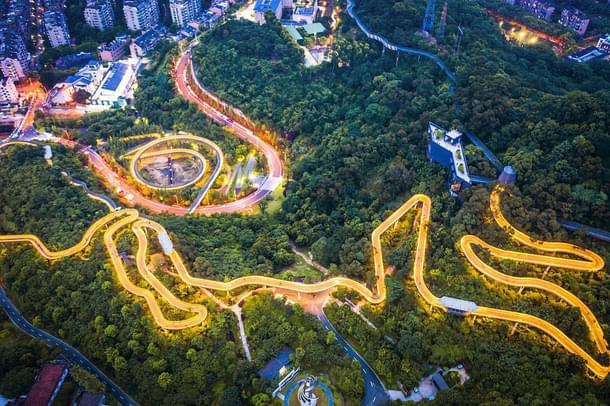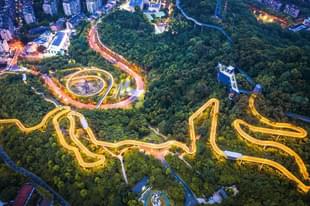World
Explained: The Underlying Infrastructure Bubble in China’s GDP Crisis
Tushar Gupta
Jul 17, 2019, 03:32 PM | Updated 03:32 PM IST
Save & read from anywhere!
Bookmark stories for easy access on any device or the Swarajya app.


Earlier this week, China’s National Bureau of Statistics (NBS) came up with the gross domestic product (GDP) numbers for the second quarter of 2019.
While the GDP growth of 6.2 per cent was consistent with the expectations of most analysts, it was lower than the 6.4 per cent mark of the first quarter of 2019, lower than the 6.6 per cent mark of 2018, and most importantly, it was the slowest growth rate witnessed in 27 years since 1992, when the NBS began calculating its current series of GDP.
To curb the volatility in the markets, the Chinese government, for over a year now, has been persuading the banks to lend freely, resulting in the further loosening up of the monetary policy.
A spokesman in the NBS stated that China had enough policy measures to fall back on to stabilise the economy going forward. These include tax rebates and emissions, and several other methods of incentivising infrastructure development.
The trade war against the United States is also taking its toll on China. The exports, reportedly, contracted in June resulting in a negative investor sentiment.
With no trade resolution in place, many companies are contemplating the idea of moving their operations out of China. The release of the GDP figures had the US President blowing his own ‘trumpet’, tweeting how the trade war was dragging the dragon down.
The unprecedented growth in credit has resulted in an uncontrollable debt, especially in areas of infrastructure and real estate. To make matters worse, the demand has not been keeping up with the supply for most real estate projects, resulting in the creation of ghost cities — new cities where residents or companies have not turned up to live or work.
In 2013, China had 730 million of its citizens residing in urban areas. By 2030, this number will hit the one billion mark. Between 1995 and 2015, China witnessed the migration of over 330 million people (more than the current population of the US), from villages to the cities.
What aided China’s growth unlike India was its ability to invest in infrastructure projects to meet the rising demand in urban areas. Thus from the late 1990s until the early 2010s, infrastructure development was one of the major driving forces of China’s economy, along with manufacturing and exports.
For instance, in merely 20 years, the Shanghai Metro surpassed the New York City Subway which had been in existence for over a hundred years. Today, Shanghai’s Metro system is 60 per cent bigger than that of its counterpart in New York.
From being a power-deficient nation, China, in 2012, was constructing three new power plants each week. The scale and speed with which the government in Beijing has developed infrastructure is spectacular. However, they missed the third critical part of the infrastructural trinity — sustainability.
Urbanisation amounts to infrastructure and this further results in the construction of new residential and commercial estates. This creates a humongous demand for steel, cement, glass and other furnishing and interior utilities, aids the growth of the manufacturing industry that deals with stone slabs, tiles, and woodwork, and so forth.
Infrastructure is a key driver for the shipping industry as iron-ore is imported in China. All these industries are instrumental in driving employment which creates strong consumer demand for products and acts as an enabler for socio-economic growth, critical to China’s macroeconomy.
However, this growth enabler now hosts China’s biggest infrastructure bubble.
To make sense of the bubble, a visit to the Pudong of 1991, a district on the outskirts of Shanghai is warranted. It was in 1991 when the land beyond the riverside on the eastern side of Shanghai was set aside for the development of Pudong as the hallmark of China’s future. A few years later, Pudong was struggling with a low count of companies and commercial establishments.
However, in 2019, at $150 billion odd, Pudong’s GDP alone is more than that of over 120 countries around the world. Since 1990, the GDP of Pudong alone has increased by 160 times.
The Chinese government tried to replicate the same model across the country, and with the way Pudong had grown, it made sense from a macroeconomic perspective.
Tieling, a city in the Liaoning Province, is a testament to the infrastructure bubble that plagues the nation today. Somewhere around 2005, the mayor of Tieling decided to give the city its own Pudong, and hence, the development of New Tieling, a twin city, was commissioned.
New Tieling was given everything, from fancy residential estates to an artificial hill, and from an amusement park to a canal that separated the new city from the old. Yet, a decade later, New Tieling is nowhere closer to Pudong in terms of scale, returns on investment, or population.
In 2007, at the peak of its construction, while China was growing at 13 per cent per annum, Tieling was growing at more than 20 per cent. The good times came to an end in 2013 when tax revenue fell by 10 per cent, in 2014 it fell by 15 per cent, and by 2015, the growth had stopped altogether.
By mid-2015, Pudong owed over $1.1 billion while it had no debt in 2008. By the end of 2015, together, China’s local governments owed $2.5 trillion in debt, almost equivalent to the size of the Indian economy then. To put things in perspective, the total debt of states and local governments of the US is $3.1 trillion, even though the economy of the US is 50 per cent bigger than that of China.
The debt by the local governments in the US has been accumulated across 200 years while in China, the same level of debt has been accumulated across 20 years.
The resulting ghost cities from these abysmal debt levels pose a significant threat to the health of the economy in China in multiple ways.
One, already in debt and low on tax returns, the local governments in China procure more loans, adding to their debt. Two, in the name of boosting the economy, profitless public works are carried out.
Three, to motivate companies to open shop in these new districts, the local governments are forced to offer heavy tax cuts. For instance, in Zhengzhou district, Foxconn, a Taiwanese company that manufactures products for Apple, has set up a plant. Today, every second iPhone in the world comes from this plant and it employs over 350,000 people.
However, to get the plant going, the local government had to invest $1.5 billion in the construction of the factory, procured an additional $250 million loan for the company, eliminated an array of taxes to cut down the shipping costs. Given the kind of incentives that were offered to Foxconn, more mobile manufacturing companies moved to Zhengzhou. However, the cost of getting the people and workforce there neutralised the prospect of any profit for the local government.
Four, it leads to a drop in the prices of houses. As per a survey by Credit Suisse, for the data available for 287 cities, more than two-thirds of them had fewer residents than what they were built for. Like in India, buying a home in China is integral to one’s social status. However, for most of these ghost cities, the property prices are depreciating.
Five, soaring credit. To encourage buyers to invest in a second or third home, the government has pushed public banks to loosen their grip on monetary policy. The consistent sale of houses fulfils two objectives. Firstly, it helps in keeping the real estate prices from sinking, and two, it aids revenue, employment, and development of all other industries that are dependent on infrastructure.
However, these artificial measures from Beijing have taken China’s debt to 303 per cent of its GDP. By July 2019, as the credit growth soars, the debt is expected to breach the 310 per cent mark. Of this debt, a considerable share is with the companies that are heavily dependent on infrastructure, and the rest is accumulated with local governments and households, the latter procuring loans to fund their real estate shopping.
The last infrastructure bubble was in 2008. Facilitated by private investment banks for their monetary interests, the bubble was invisible for a greater part of its existence until the fall of Lehman Brothers in September 2008. In China, however, the bubble is visible even with a lack of adequate data.
For the government in Beijing, the bubble serves as a tool to further their global interests like the Belt Road Initiative (BRI) and establish themselves as the new superpower against the US. For the local governments across the country, it serves as a way of generating tax, procuring more loans, and showcasing development by ushering in an artificial demand.
While President Donald Trump may want to attribute the weak growth in China to the trade war, the truth remains that the trade war has triggered the crashing of the infrastructure bubble, integral to China’s growth in the last two decades.
An immediate measure to keep the bubble from bursting is more credit, more artificial demand, and a resolution for the trade war, but all this comes at the cost of a surging debt, already exceeding 300 per cent of the GDP.
From here, with each passing quarter, Beijing will find it hard to balance the debt, demand, credit and growth. The music is slowing down, again, like it did in 2007-08.
The article is a first in a multi-part series on China’s infrastructure, trade war, and economic growth.
Tushar is a senior-sub-editor at Swarajya. He tweets at @Tushar15_





